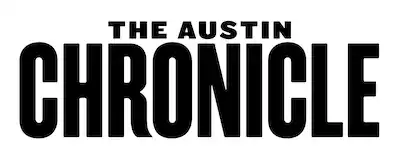https://www.austinchronicle.com/news/2010-05-07/1025329/
Three Steps Forward, One Step Back
By Katherine Gregor, May 7, 2010, News
Makeover: I-35
City Council has finally approved funding and a June start for the I-35 Makeover Project, a symbolic reconnection of East Austin to Downtown. The improvements under the highway, between East Sixth and Eighth, are intended to enhance the area's safety, comfort, and attractiveness. The city plans to fund the seven-month project with revenues from the city-managed parking lots under I-35 and from certificates of obligation (worth $1.5 million) issued by the city. "The interstate has divided our city for too long," said Council Member Sheryl Cole. "I am proud to see this effort finally under construction." The grassroots effort was started in 2004 by a diverse community coalition. Larry Warshaw, chair of the I-35 Makeover Coalition, gave credit to a sustained group effort that has included the Texas Department of Transportation as well as the city. Keep Austin Beautiful provided a $250,000 grant to help fund the landscape portion. New lighting, funded through the city's Art in Public Places program, will create a computer-generated light show added for both safety and appeal.
Facelift: Congress Avenue
An April 29 event drew more than 100 people interested in hearing about progress on Congress Avenue – aka the "Main Street of Texas" – since Feb. 26, when the Downtown Austin Alliance held its "Enhancing the Congress Avenue Experience" charrette. Since then, planters have filled with flowers, new retail leases have been signed, outdoor spaces are seeing more dining and live music, and city and state officials have begun discussions about making the 1000 block (directly across from the Capitol) a more inviting gateway to Downtown for tourists. Among the most universal goals expressed by charrette participants in February: Expand sidewalk dining on the avenue, and get rail transit running down Congress. To smooth the way for making diverse improvements, the city of Austin has agreed to a single point of contact – acting Assistant City Manager Howard Lazarus – for all Congress Avenue project decisions involving the city. In addition, Capital Metro has agreed to set up a timetable and work plan for moving its buses off Congress Avenue to neighboring streets. Teams have also begun meeting to address issues on each block. For more info, see www.downtownaustin.com.
Resuscitation: Airport Boulevard
City Council last week directed staff to pursue a new initiative for rejuvenating Airport Boulevard. In the next three to six months, the city plans to select a project consultant with "specialized expertise" in form-based code – the approach favored by sponsoring Council Member Chris Riley for fostering a more walkable, vibrant neighborhood corridor (see "Reinventing Airport Boulevard," Jan. 8). The two-mile stretch targeted includes the ailing Highland Mall and two new MetroRail transit stations. According to an April 7 staff memo to the mayor and council, objectives include encouraging "positive redevelopment" that has "a positive relationship" with existing neighborhoods, engaging "all stakeholders throughout the process," supporting "multi-modal transportation," and serving "as a pilot project for possible future form-based code planning initiatives elsewhere." As such, the council action signals a new city direction in urban planning. (Corridors are also a focus of the city's emerging Strategic Mobility Plan.) The plan intends for the broad community to help shape the vision, at the start and throughout, and calls for an advisory group composed of both area stakeholders and professionals from the fields of design, urban planning, and land development.
Seeking a Cure
Mayor Lee Leffingwell's recent call for a second Convention Center hotel Downtown sparked a response last week from Tim Finley – who seized the moment to request upzoning of his property on Congress Avenue between Second and Third streets. If granted, the change from Central Business District to CBD-Central Urban Redevelopment would effectively remove height limits and other restrictions, making the site more attractive to a high-rise hotel developer. However, the draft Downtown Austin Plan recommends eliminating CBD-CURE zoning altogether so that the city can adopt a workable density bonus system. CBD-CURE directly grants additional entitlements; a density bonus program, by contrast, would require developers to "earn" them by funding community benefits, such as affordable housing and parks. Finley's property is the infamous block from which tenants Las Manitas, Escuelita del Alma, and Tesoros Trading Co. were forced out – and the buildings torn down – to make way for a promised 1,000-room Marriott hotel project. But the recession killed that deal. The request ultimately could be decided by the mayor and City Council – who also must make a decision on the density bonus program.
Copyright © 2025 Austin Chronicle Corporation. All rights reserved.
